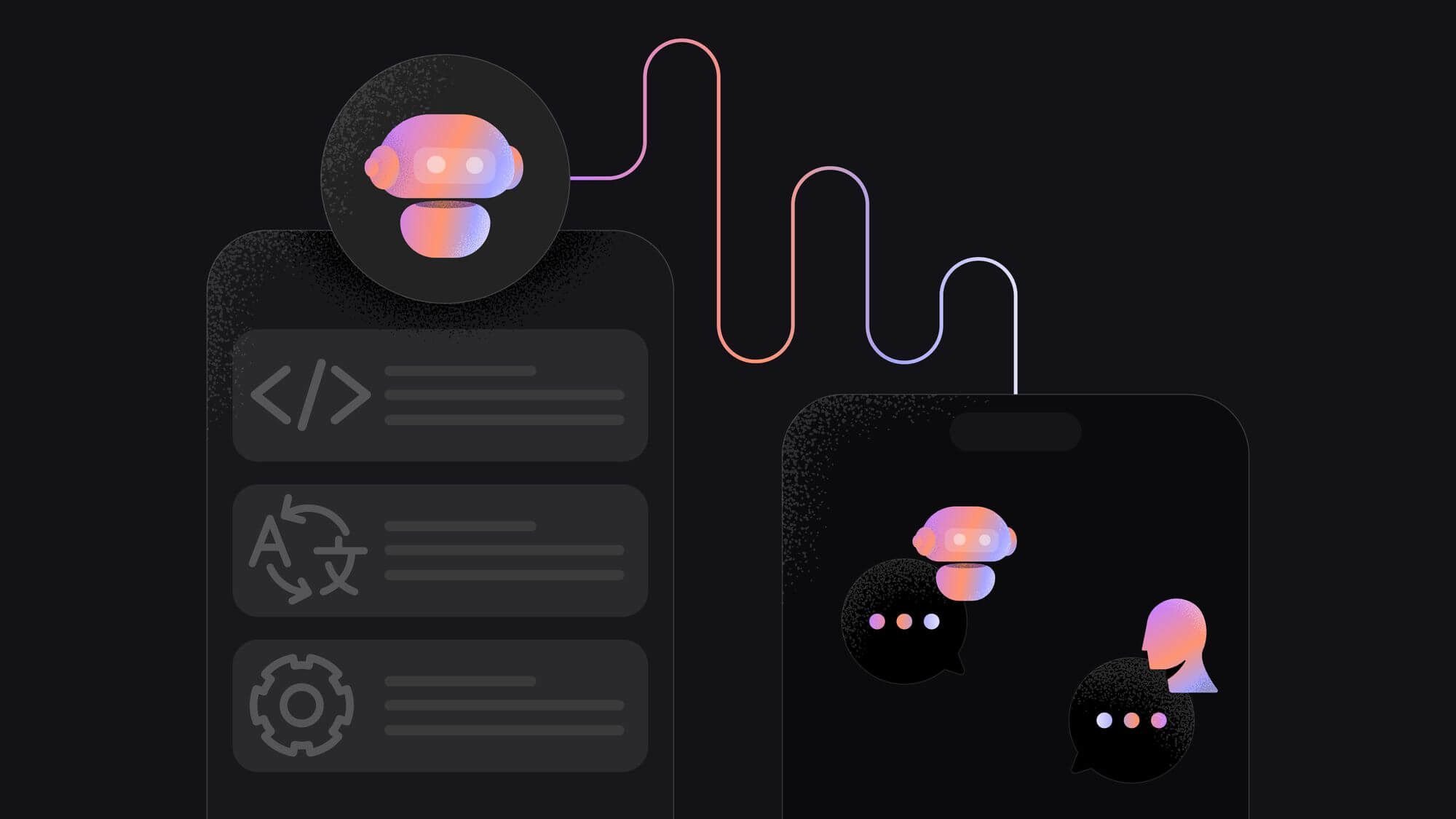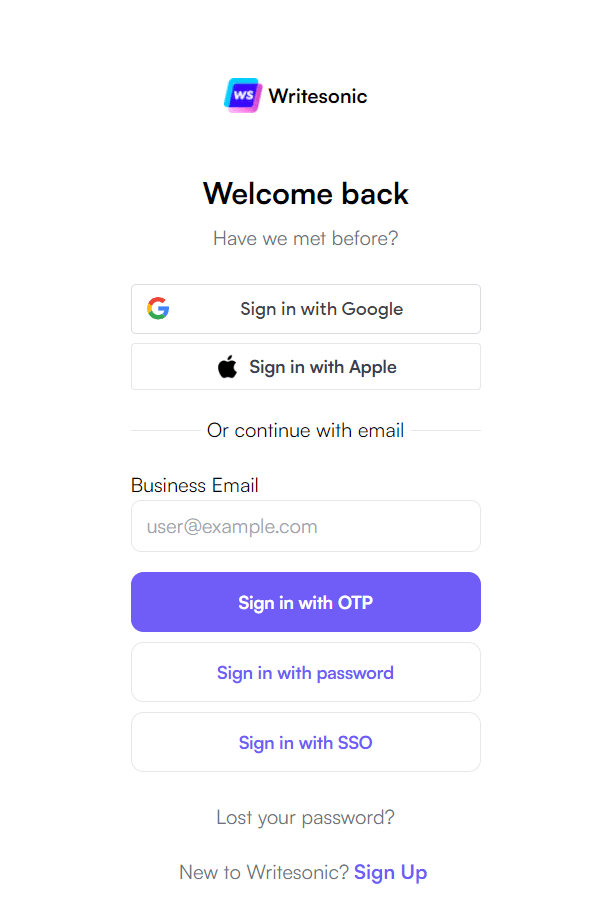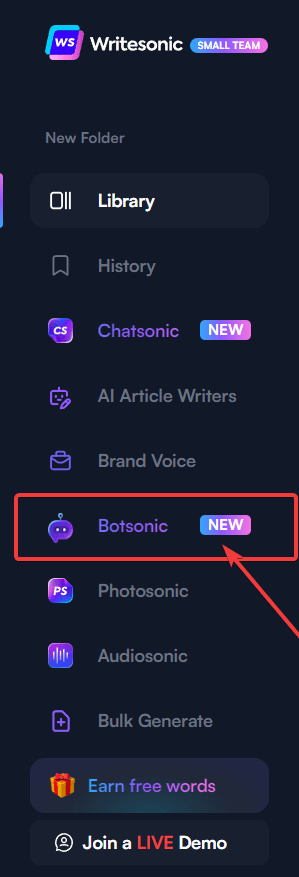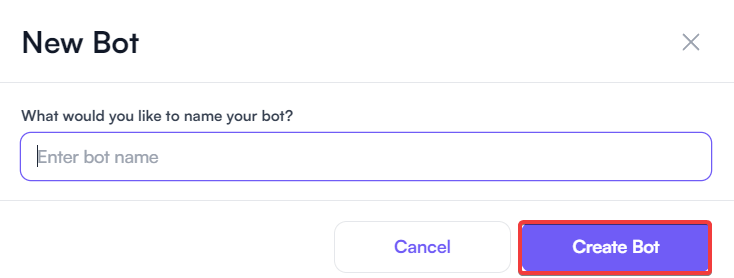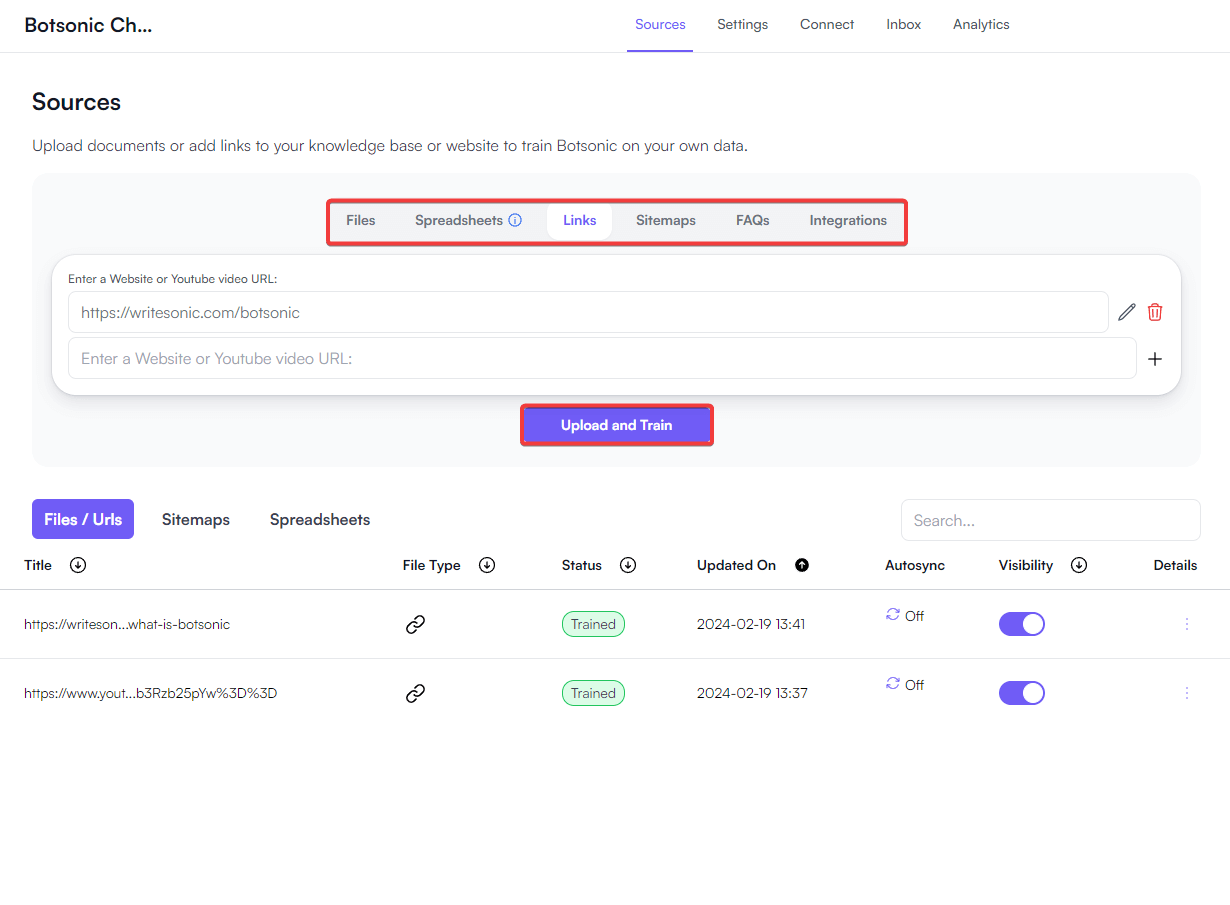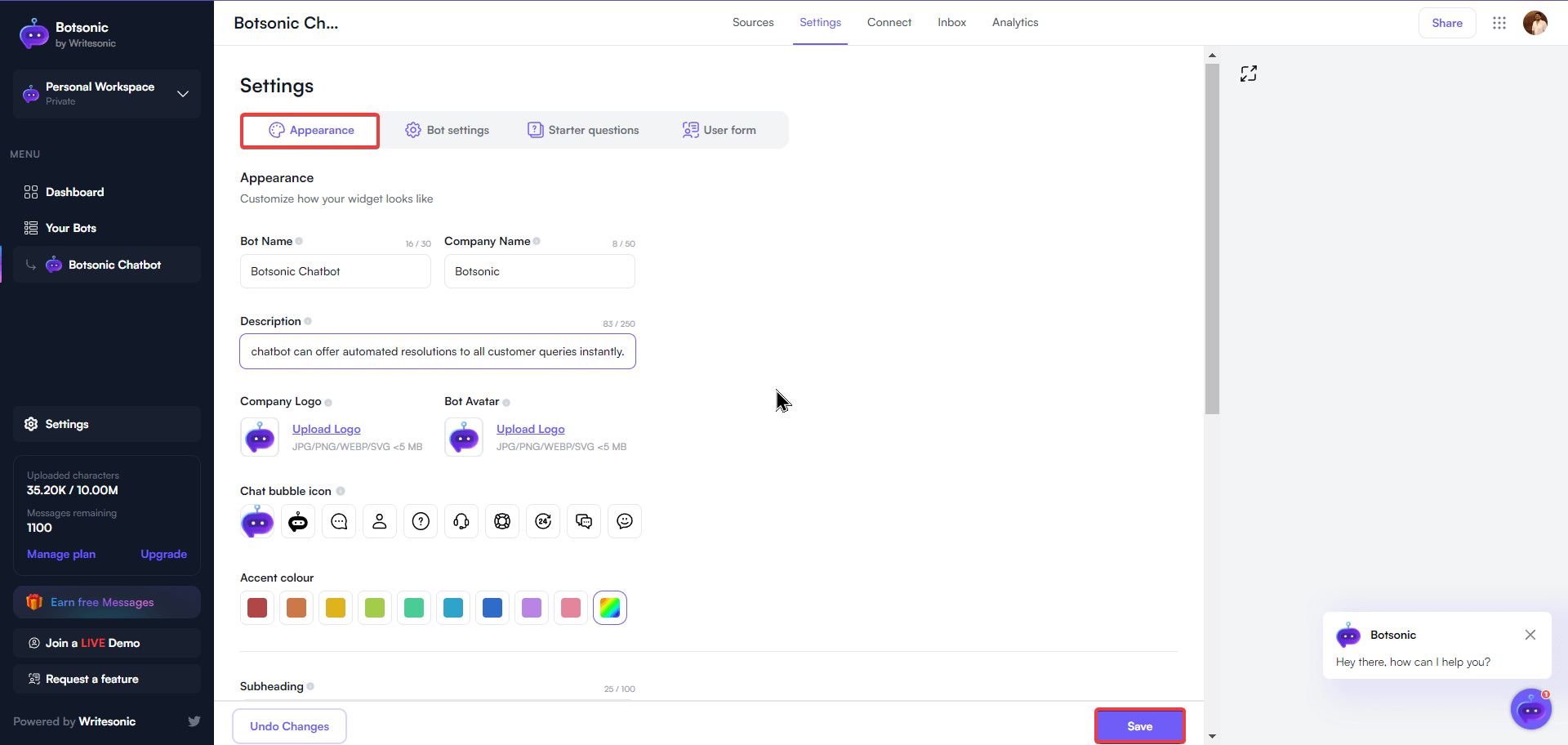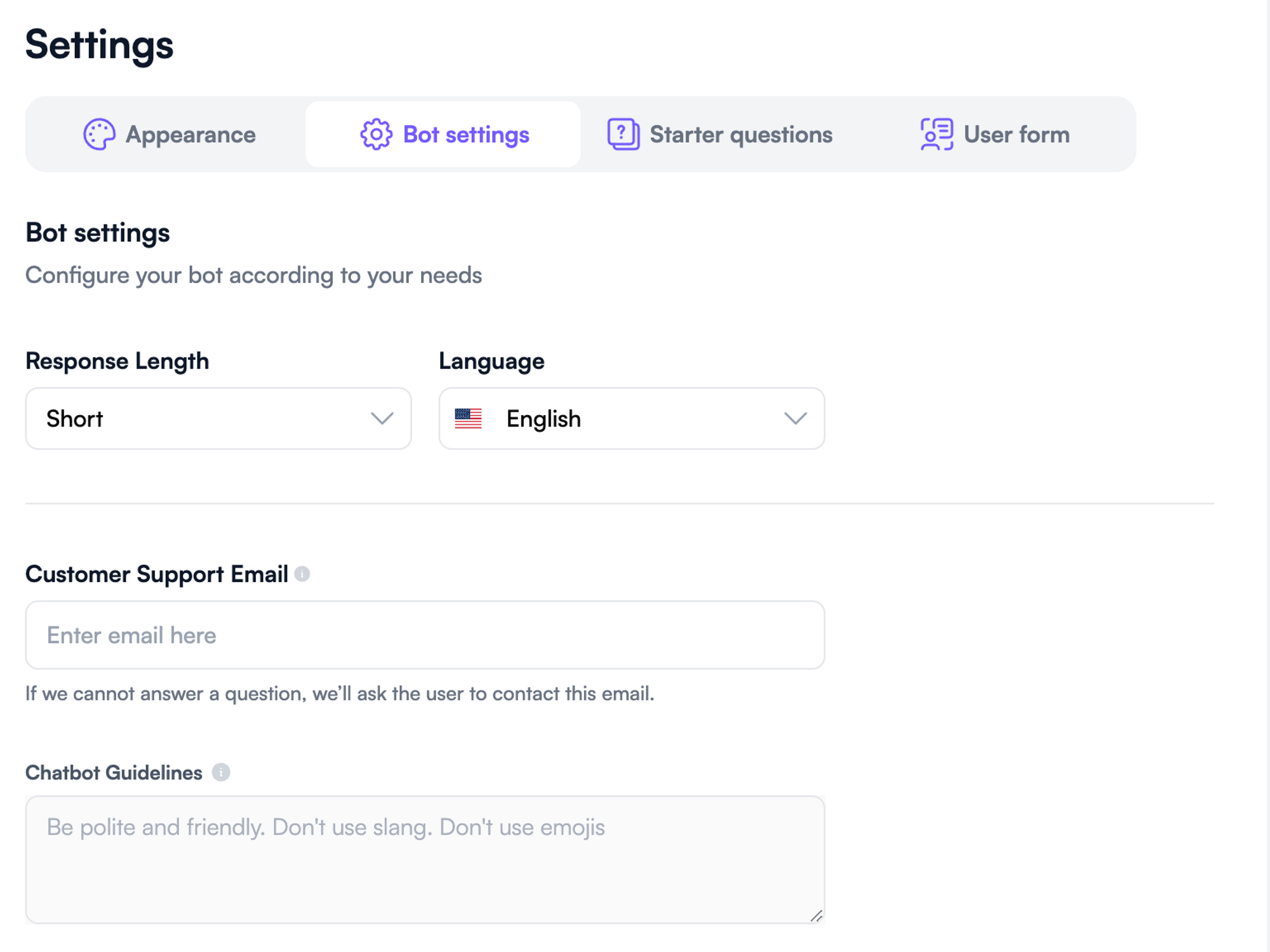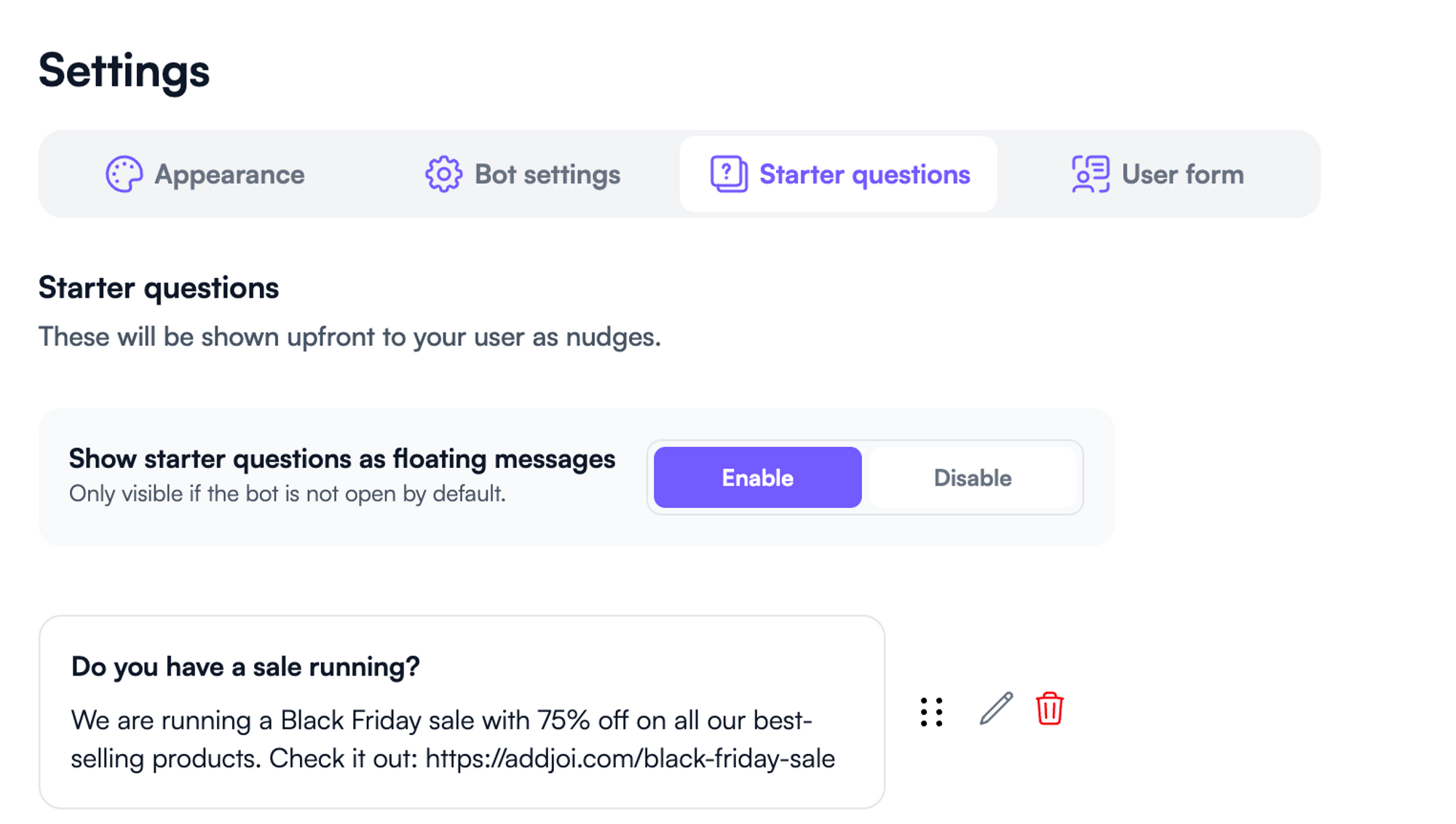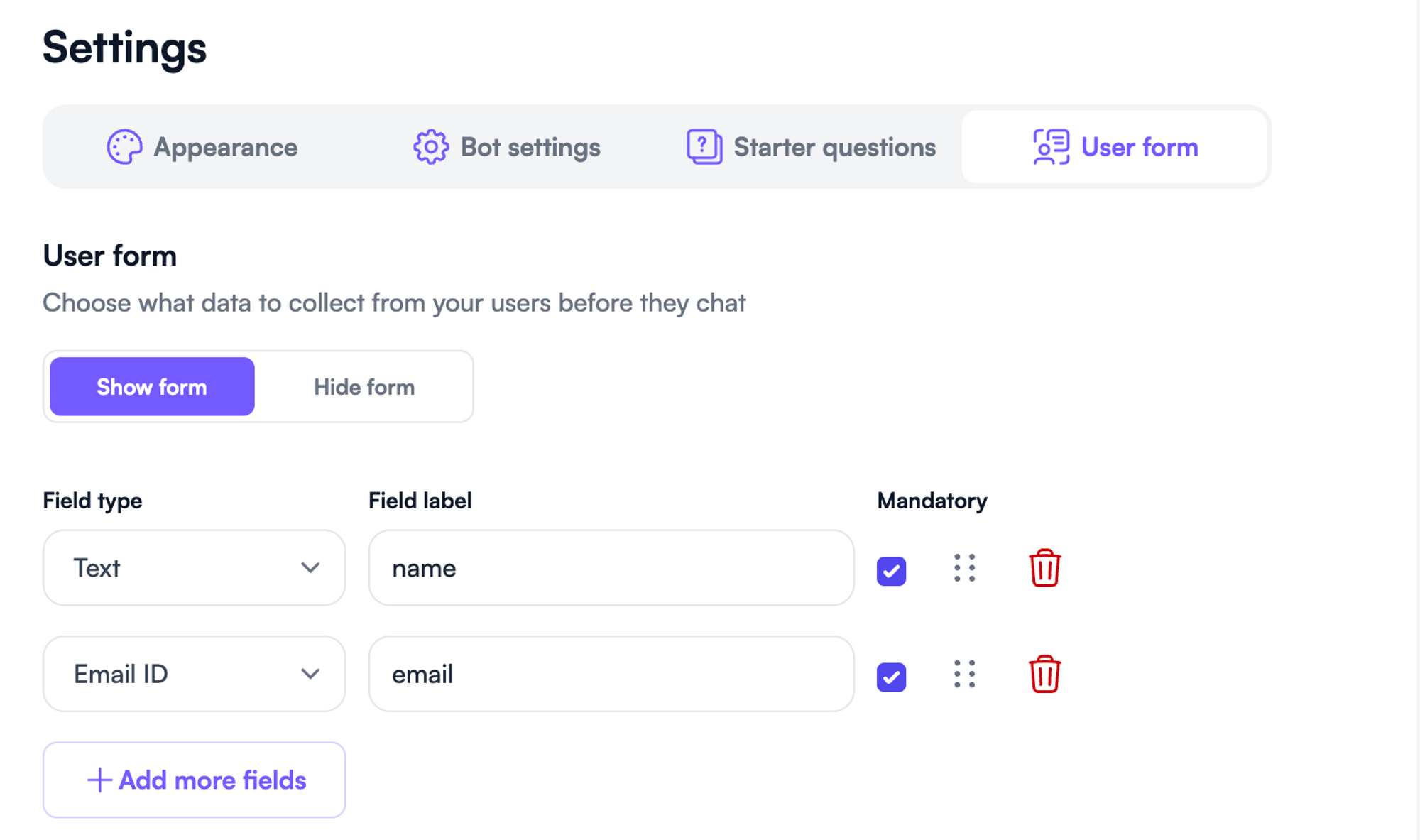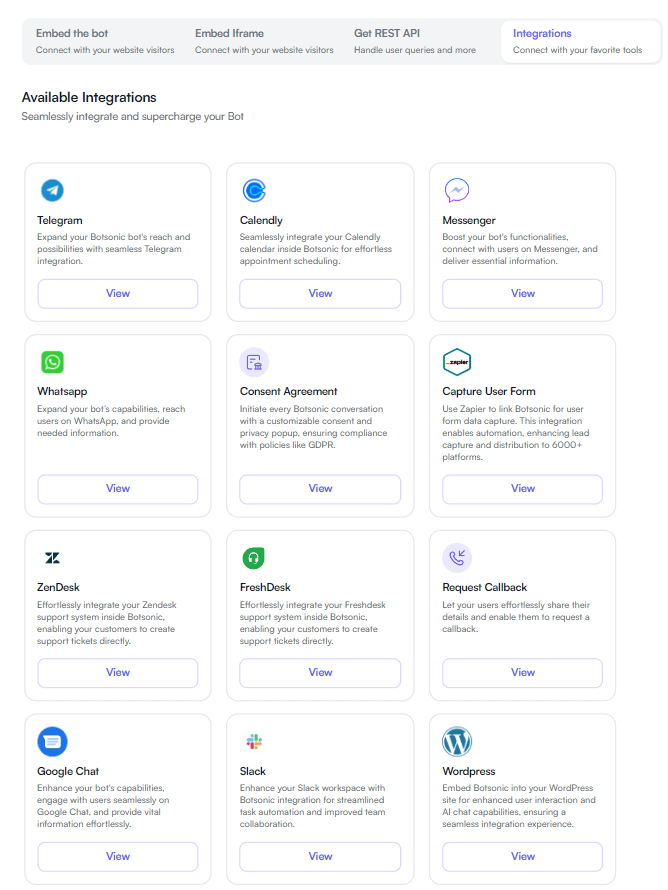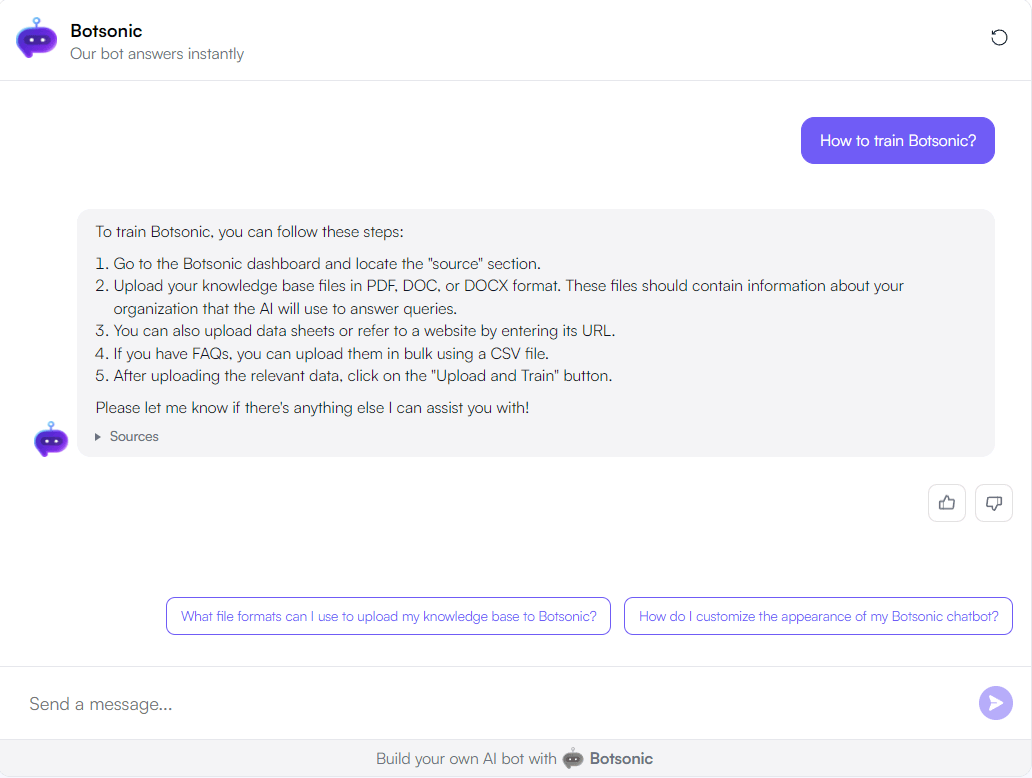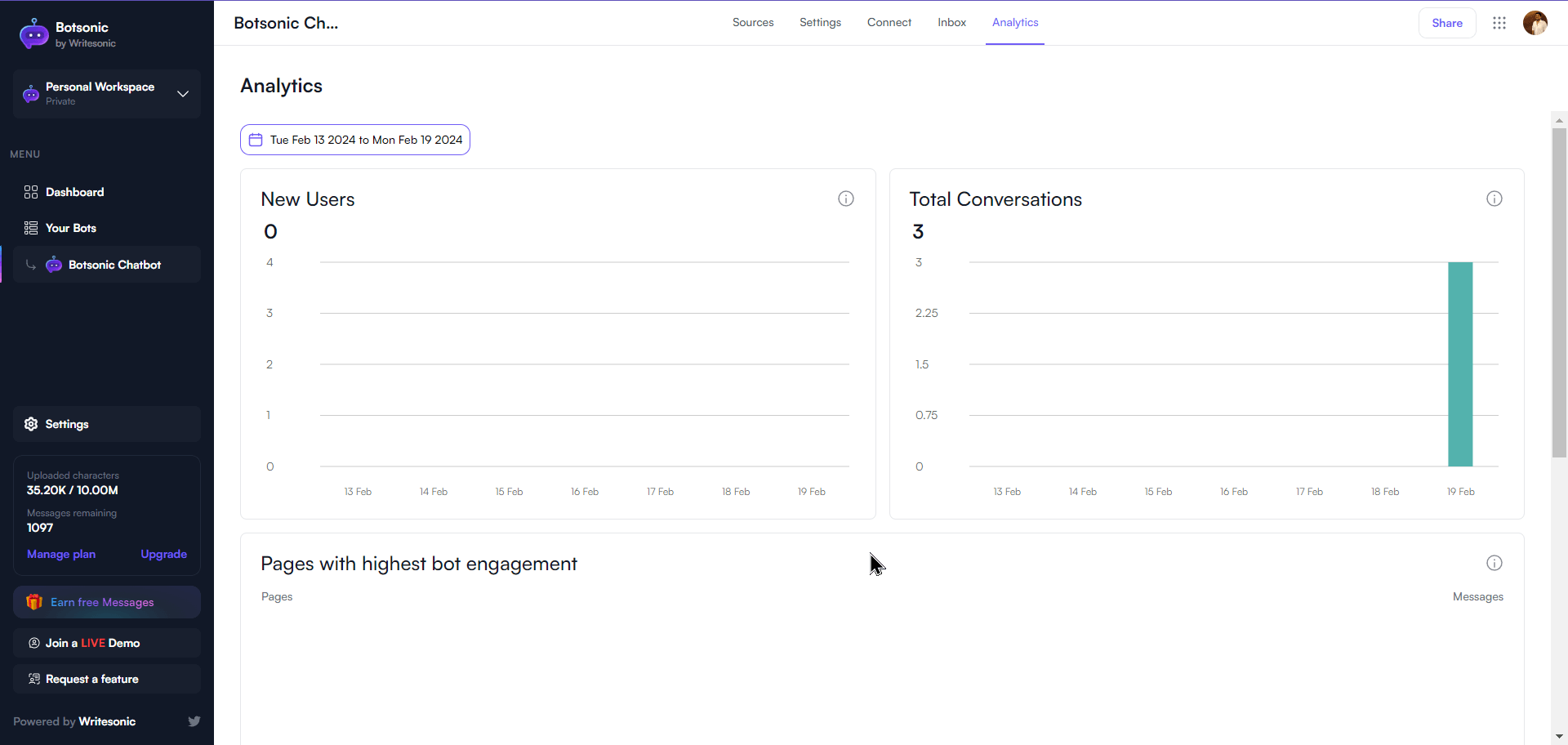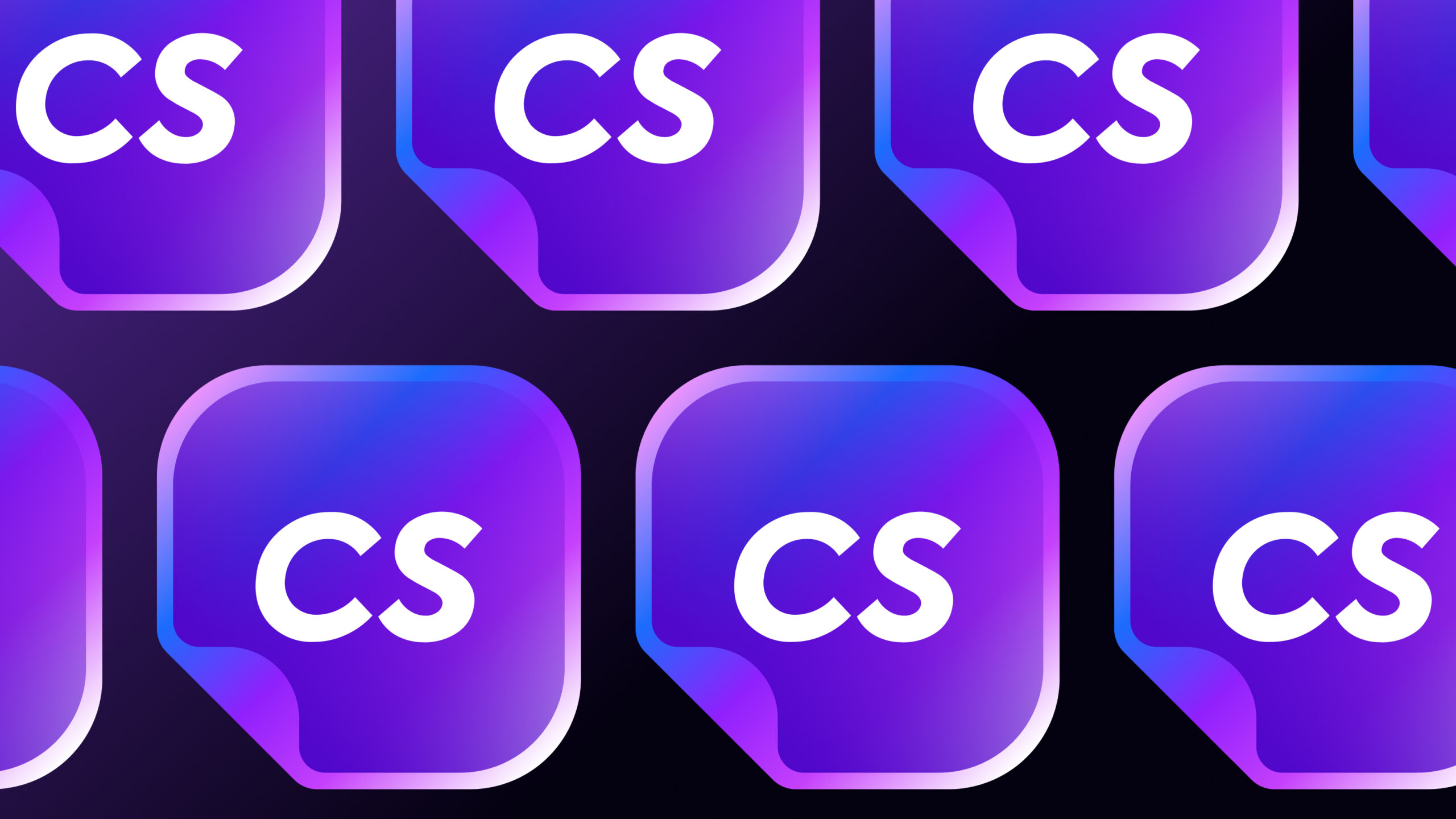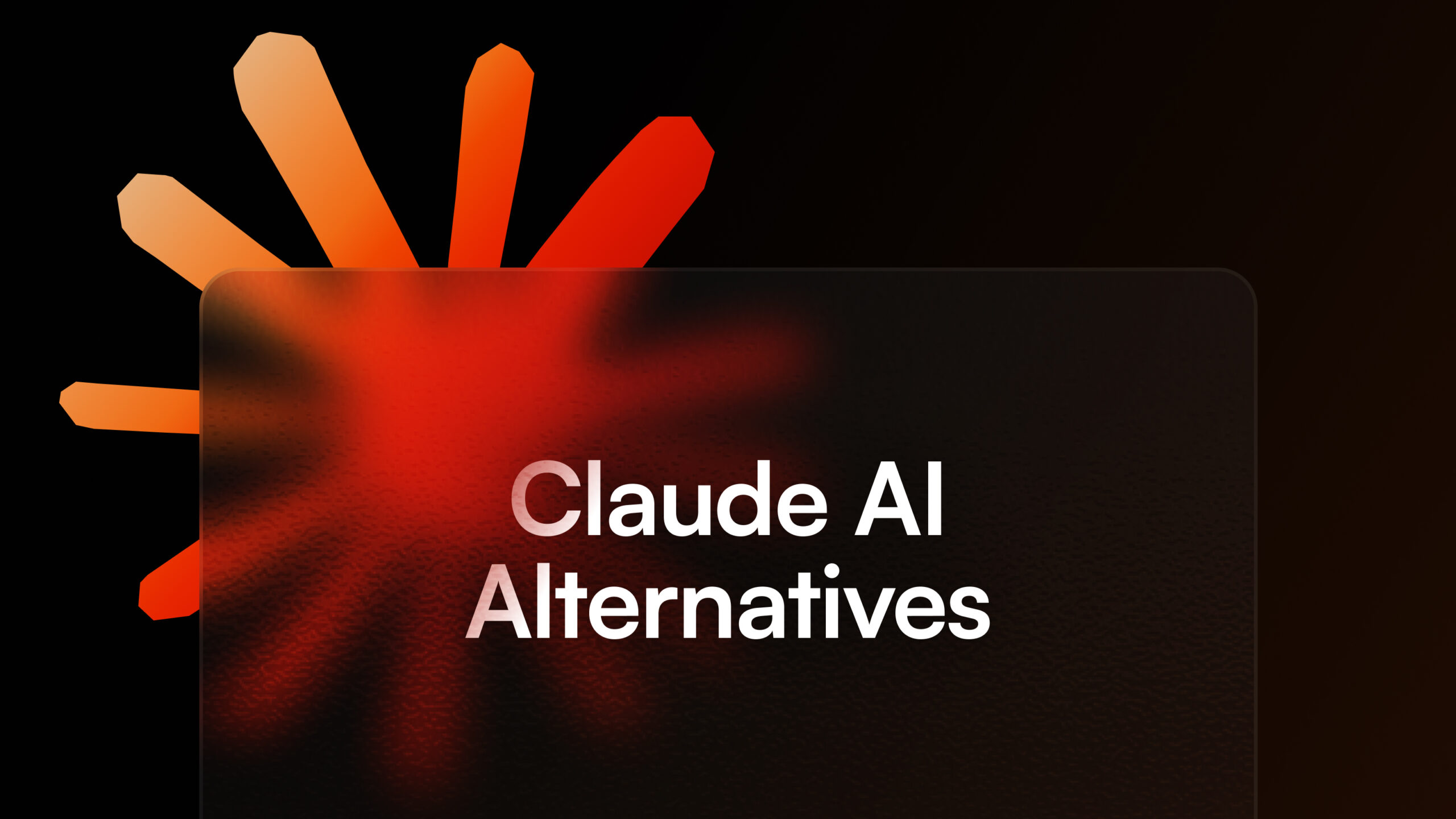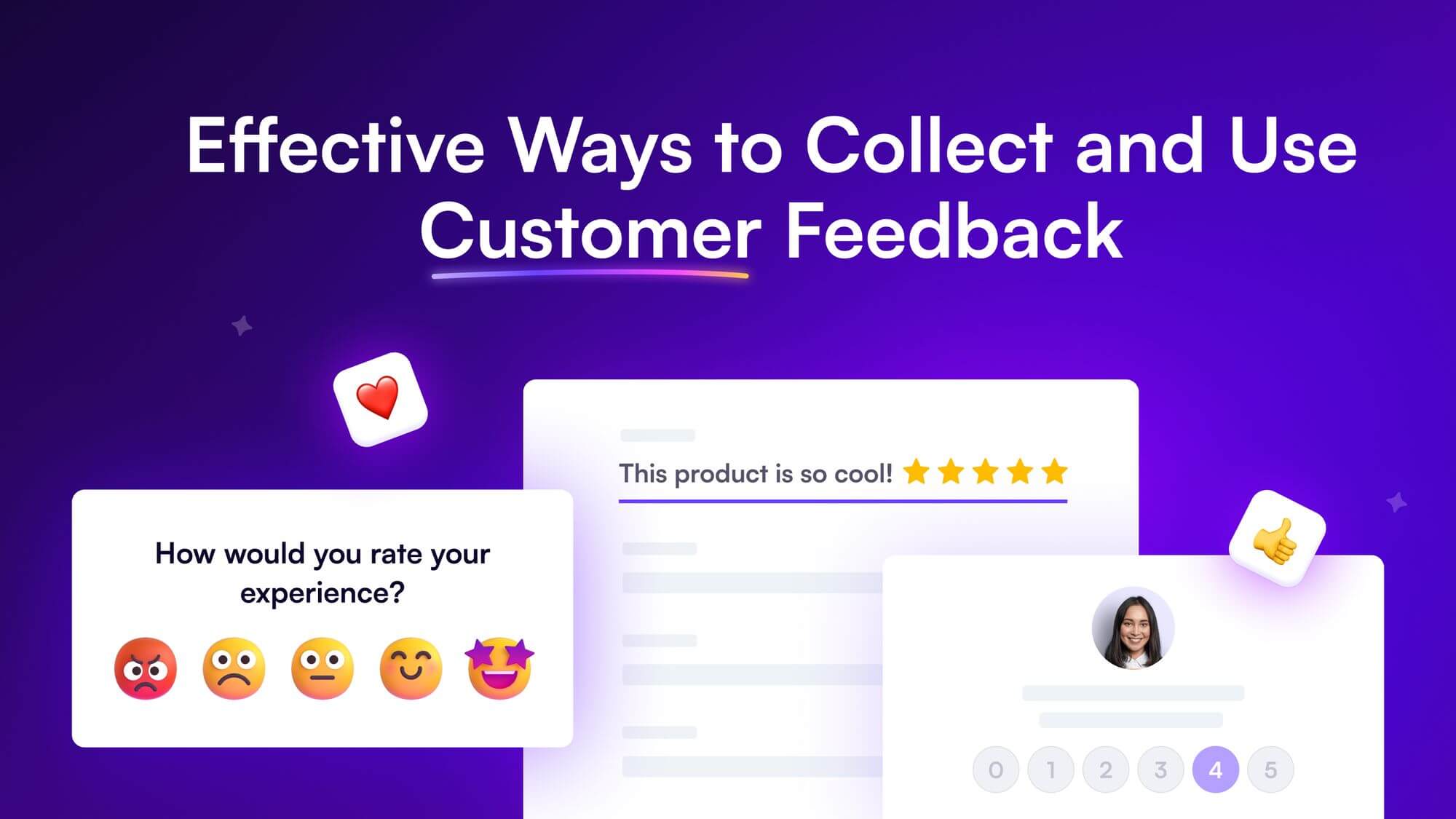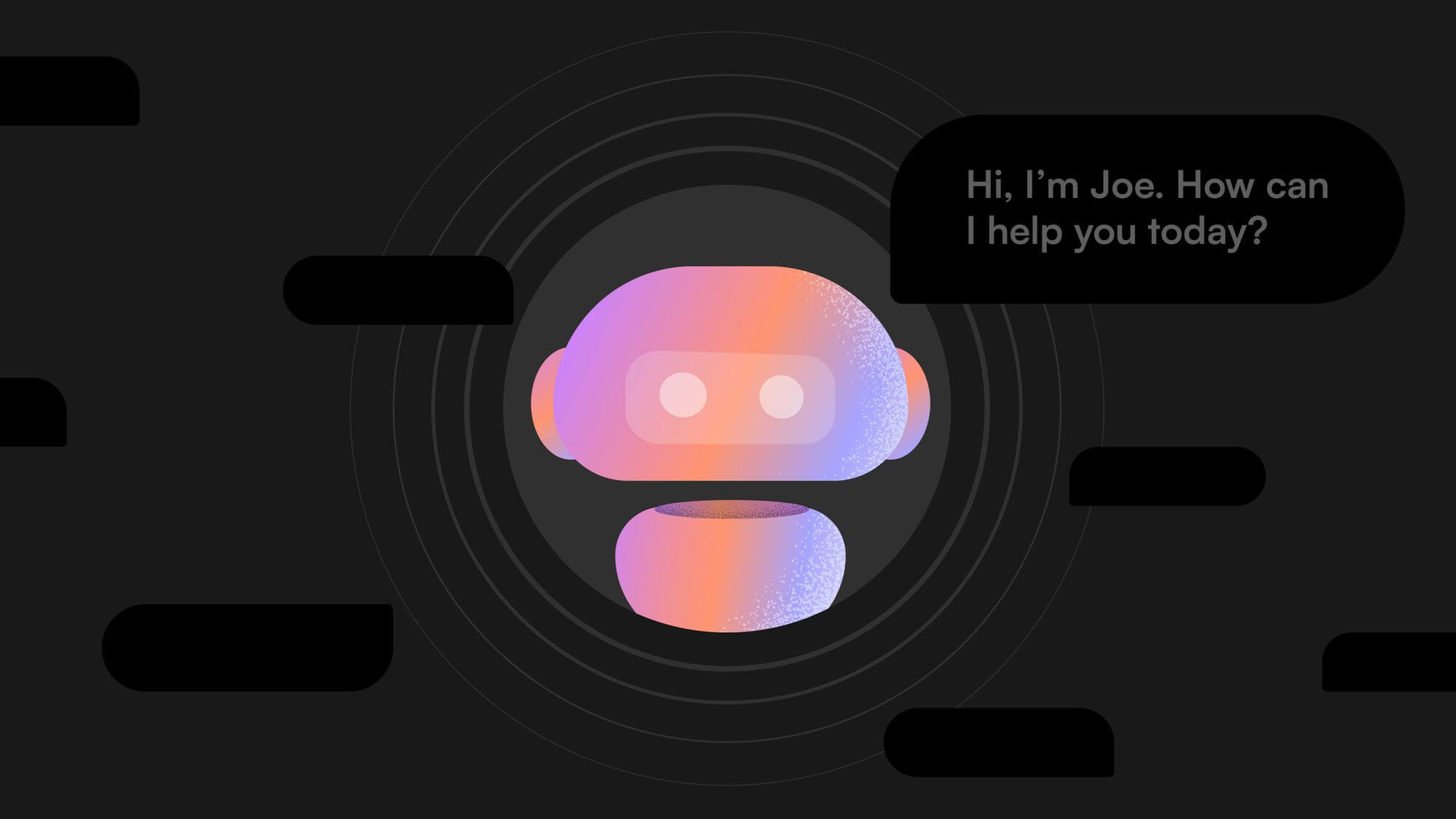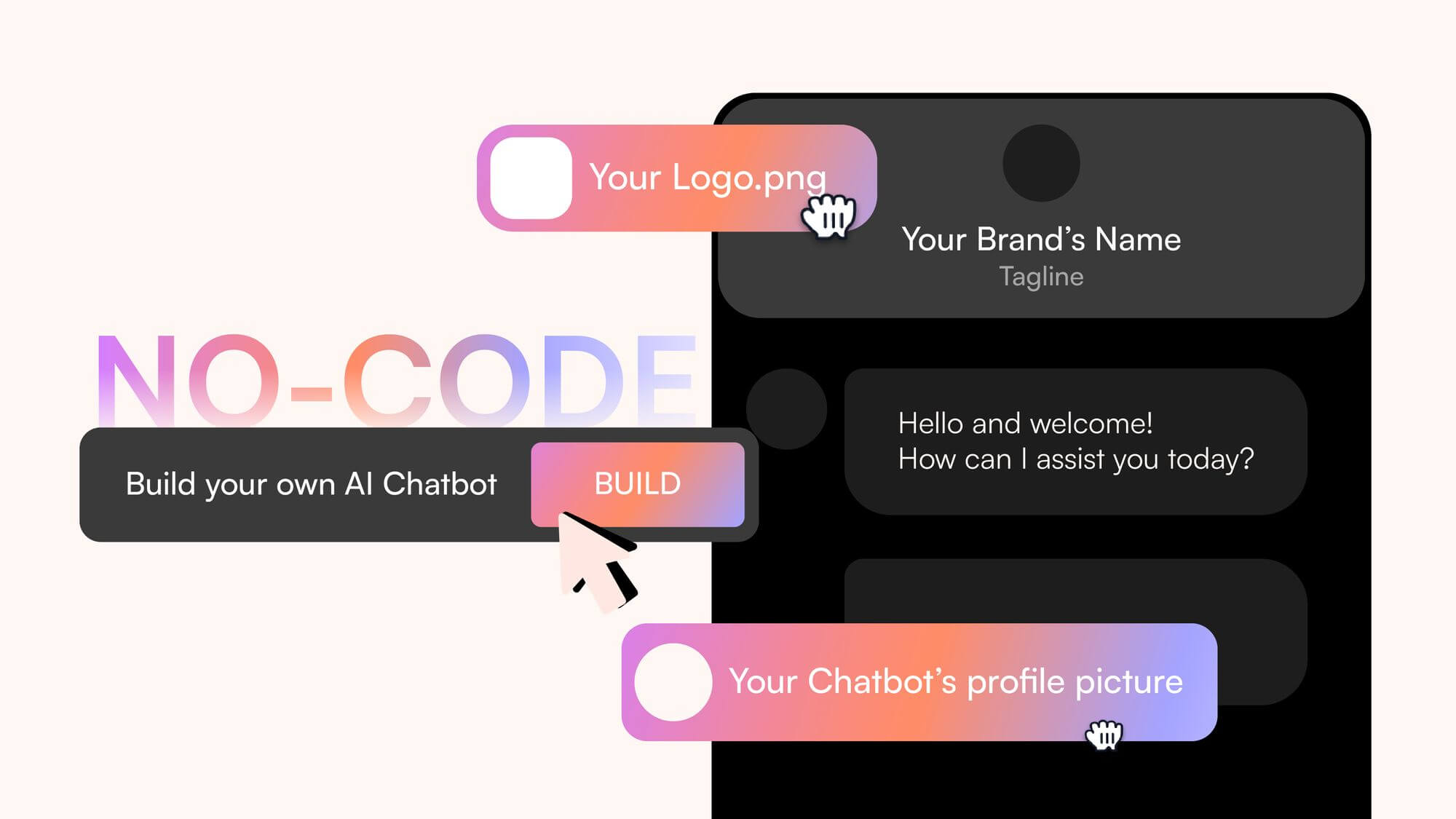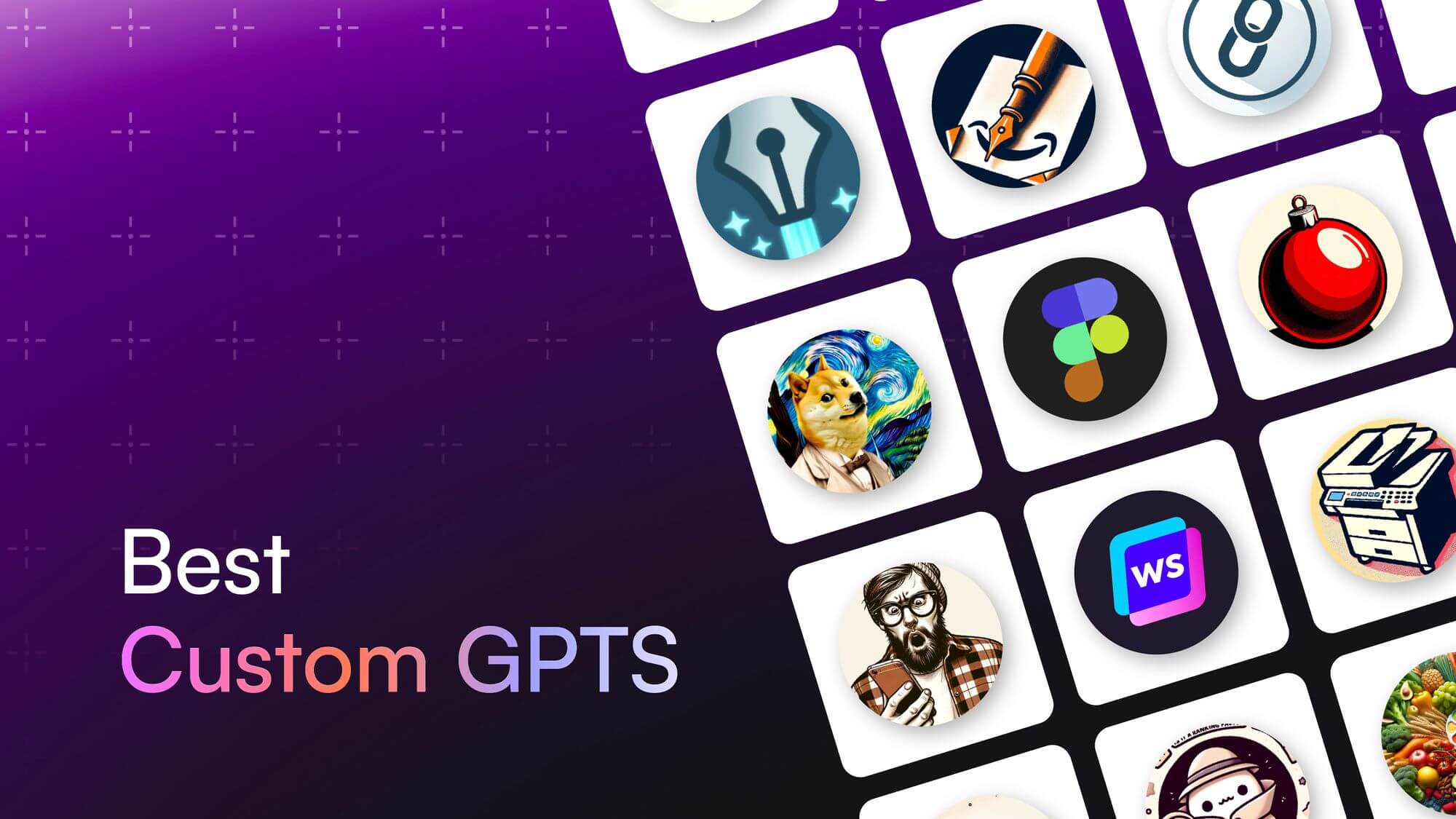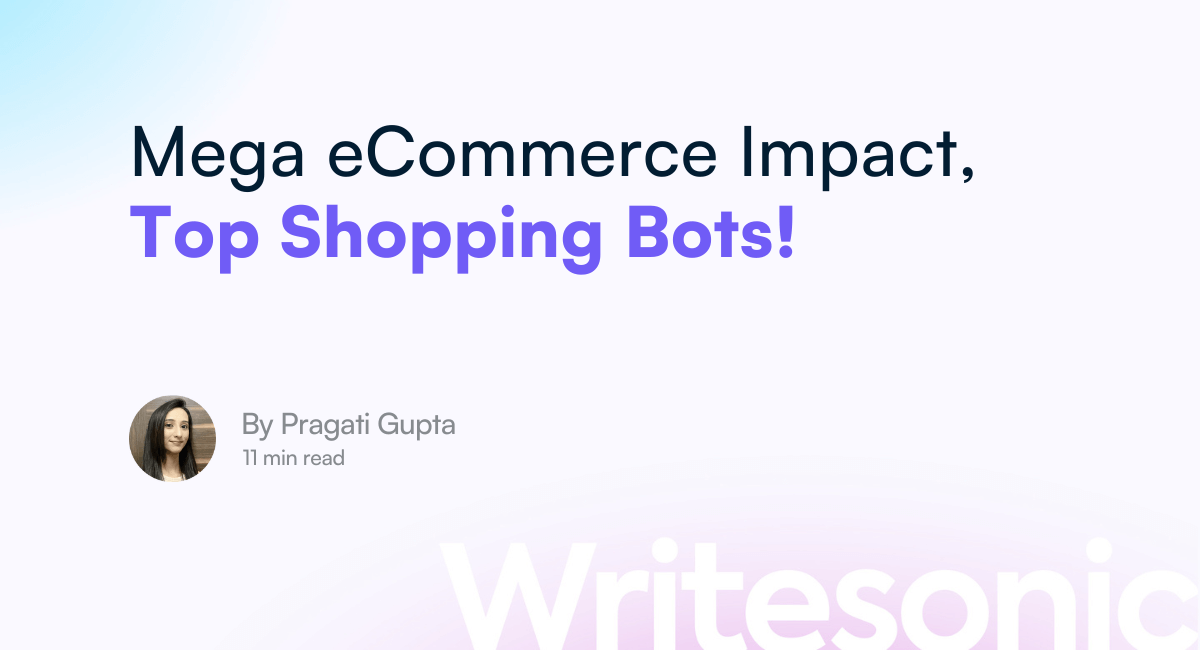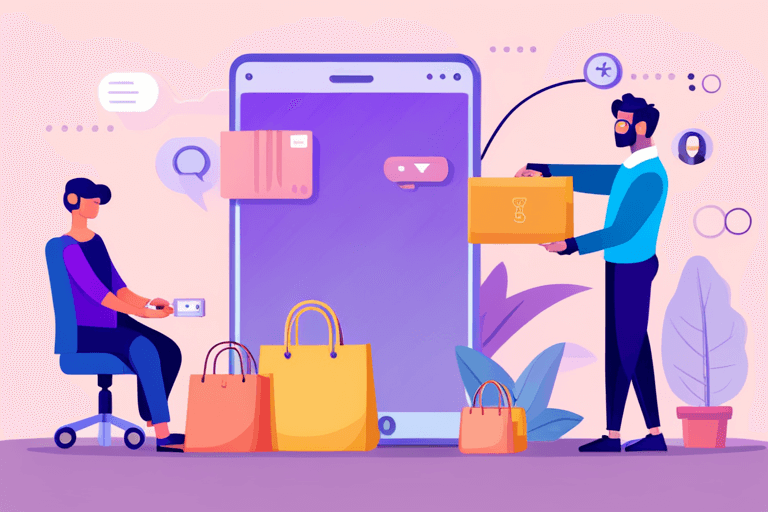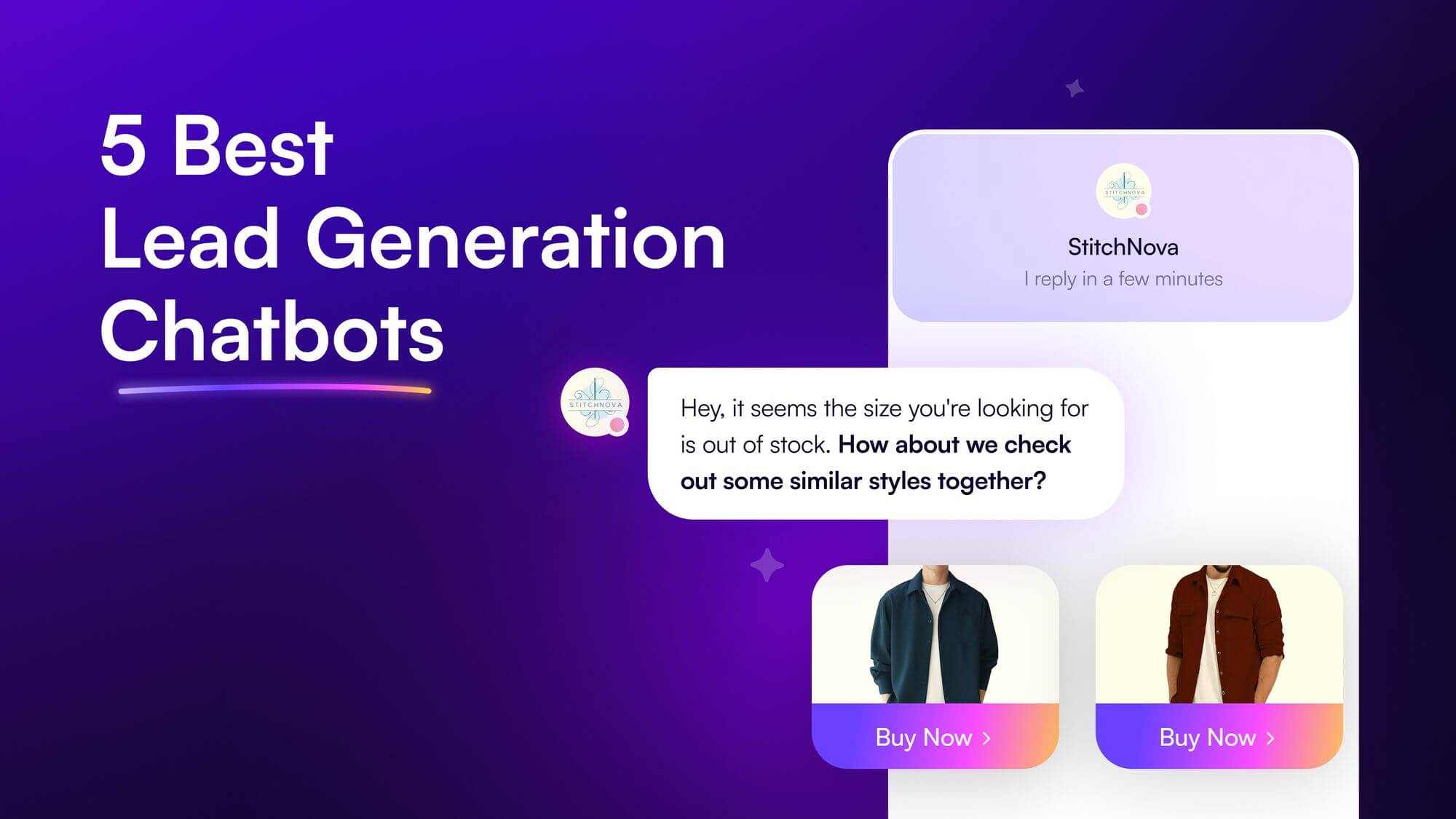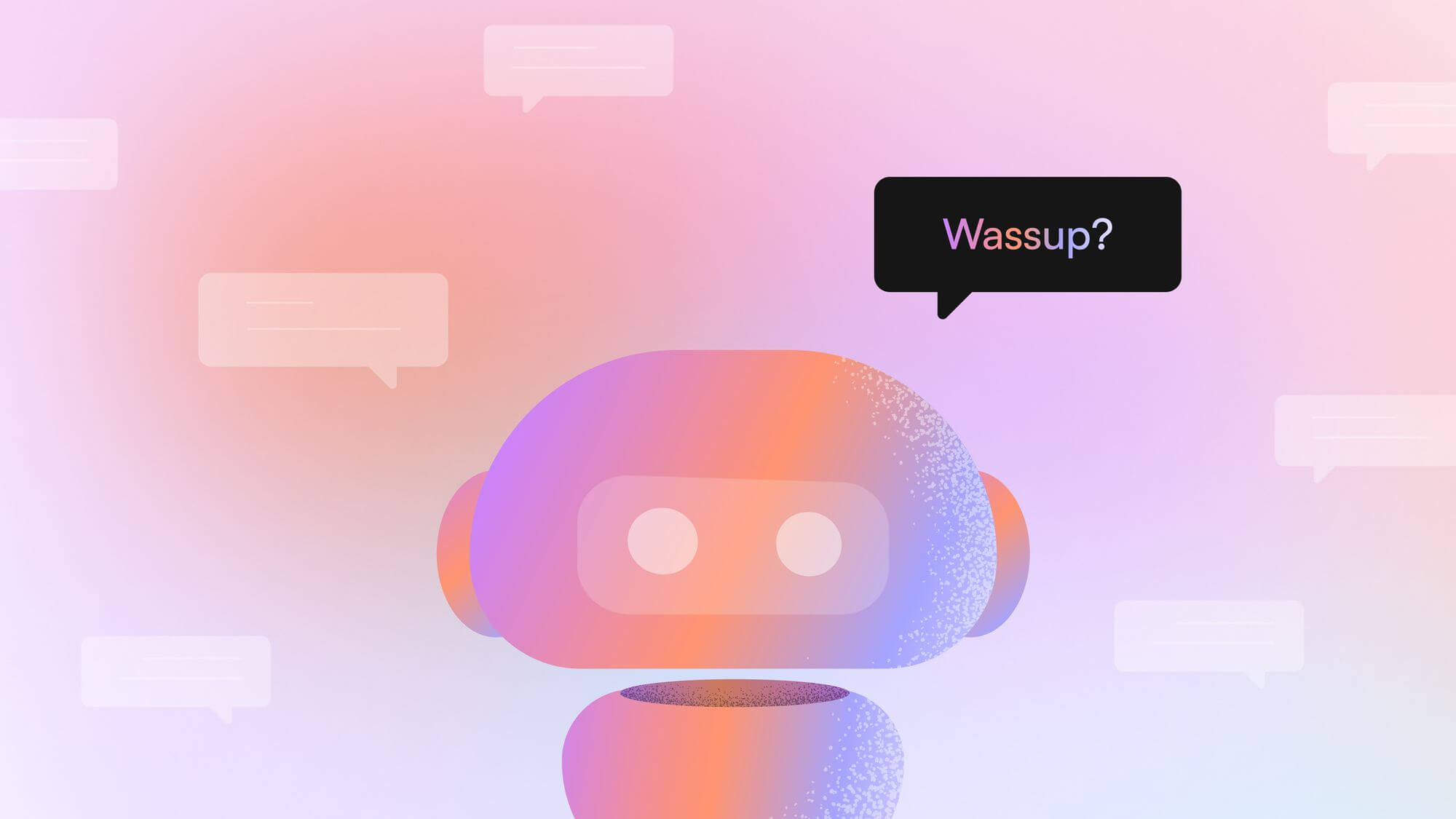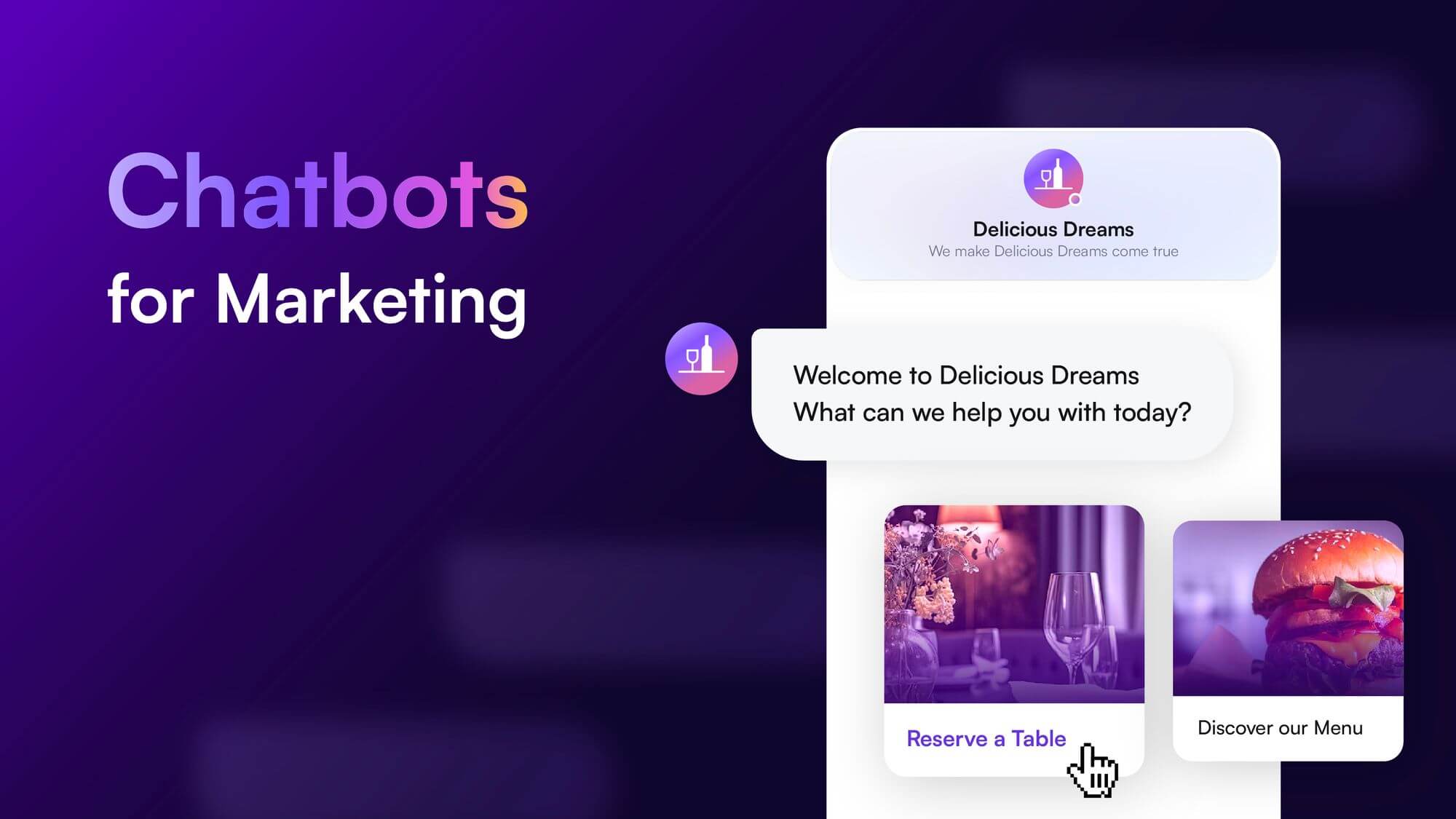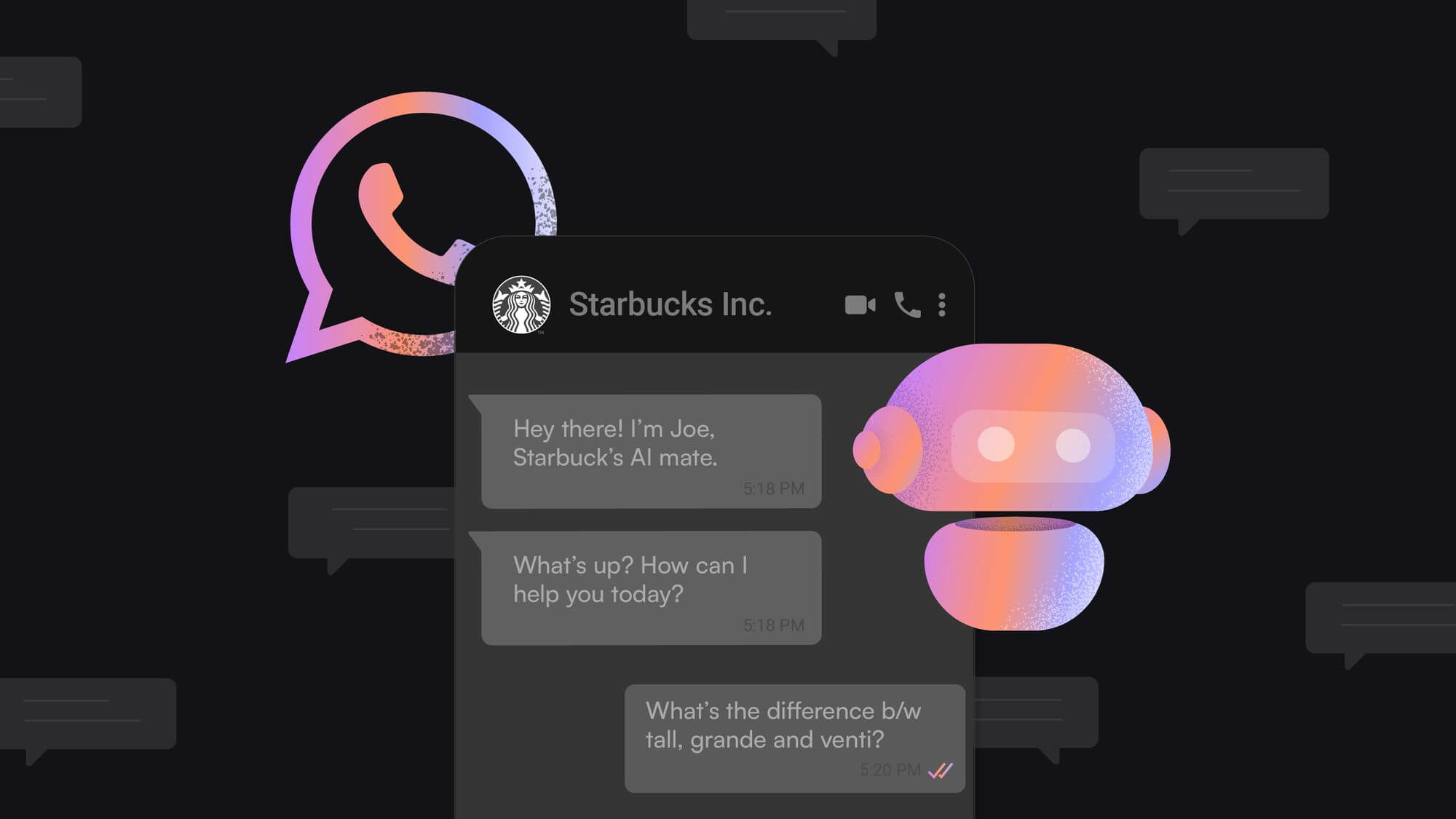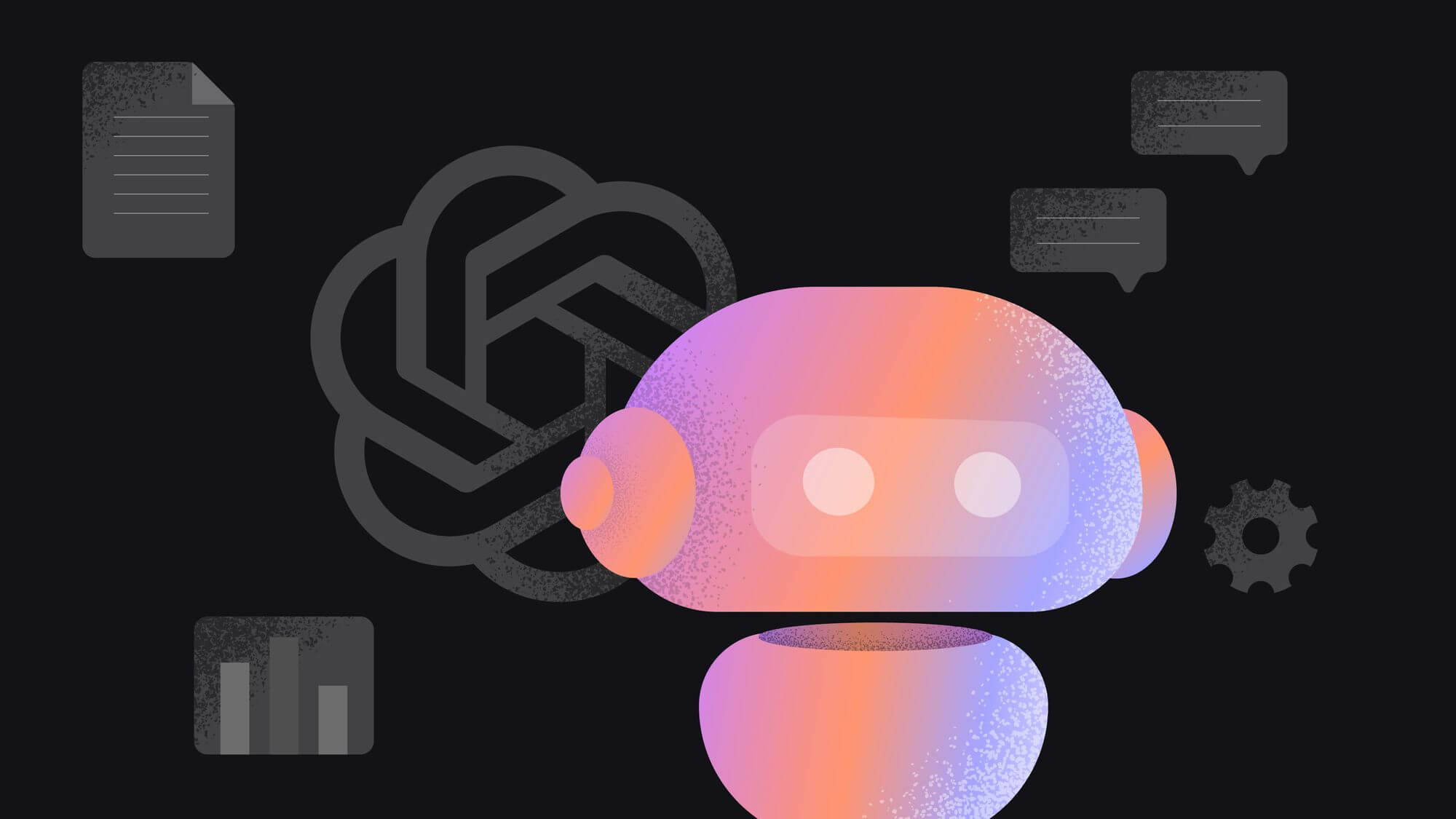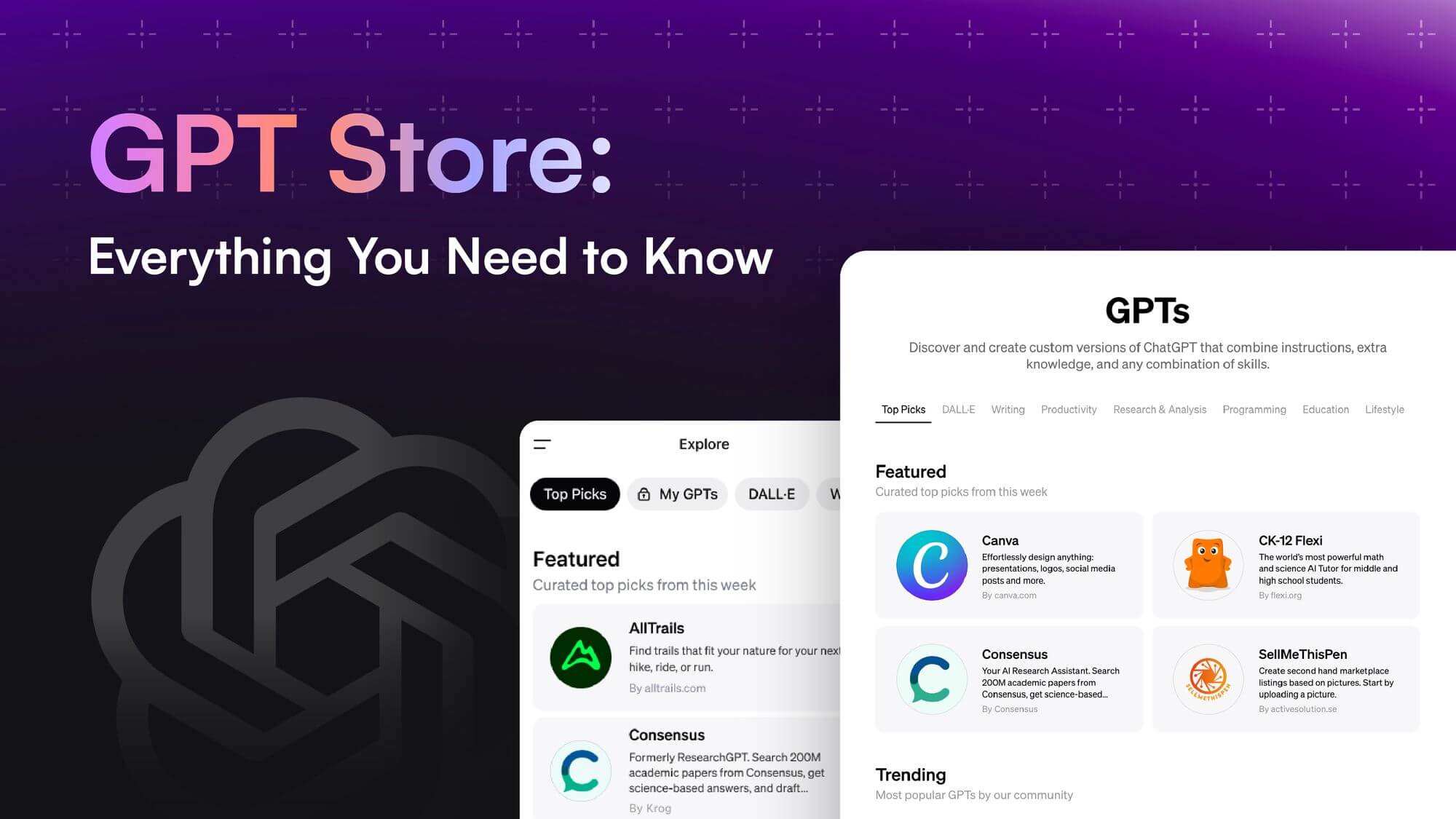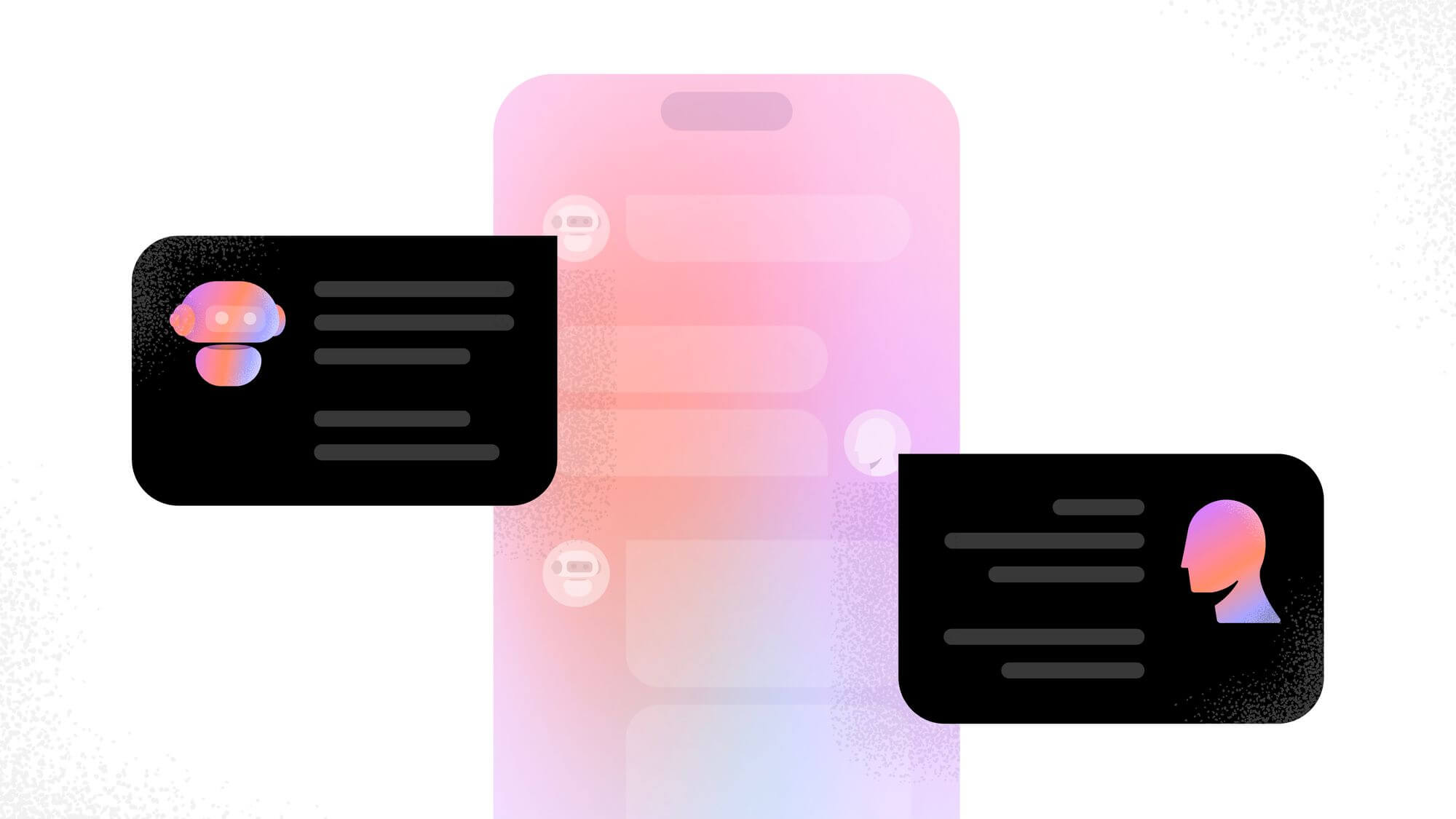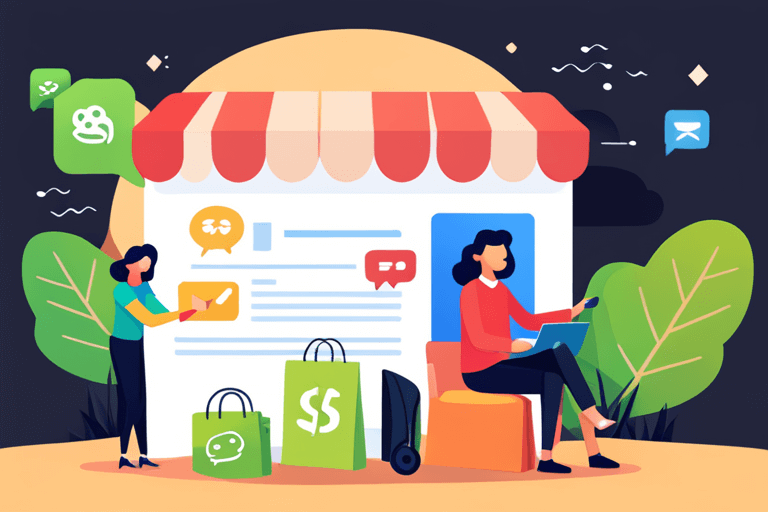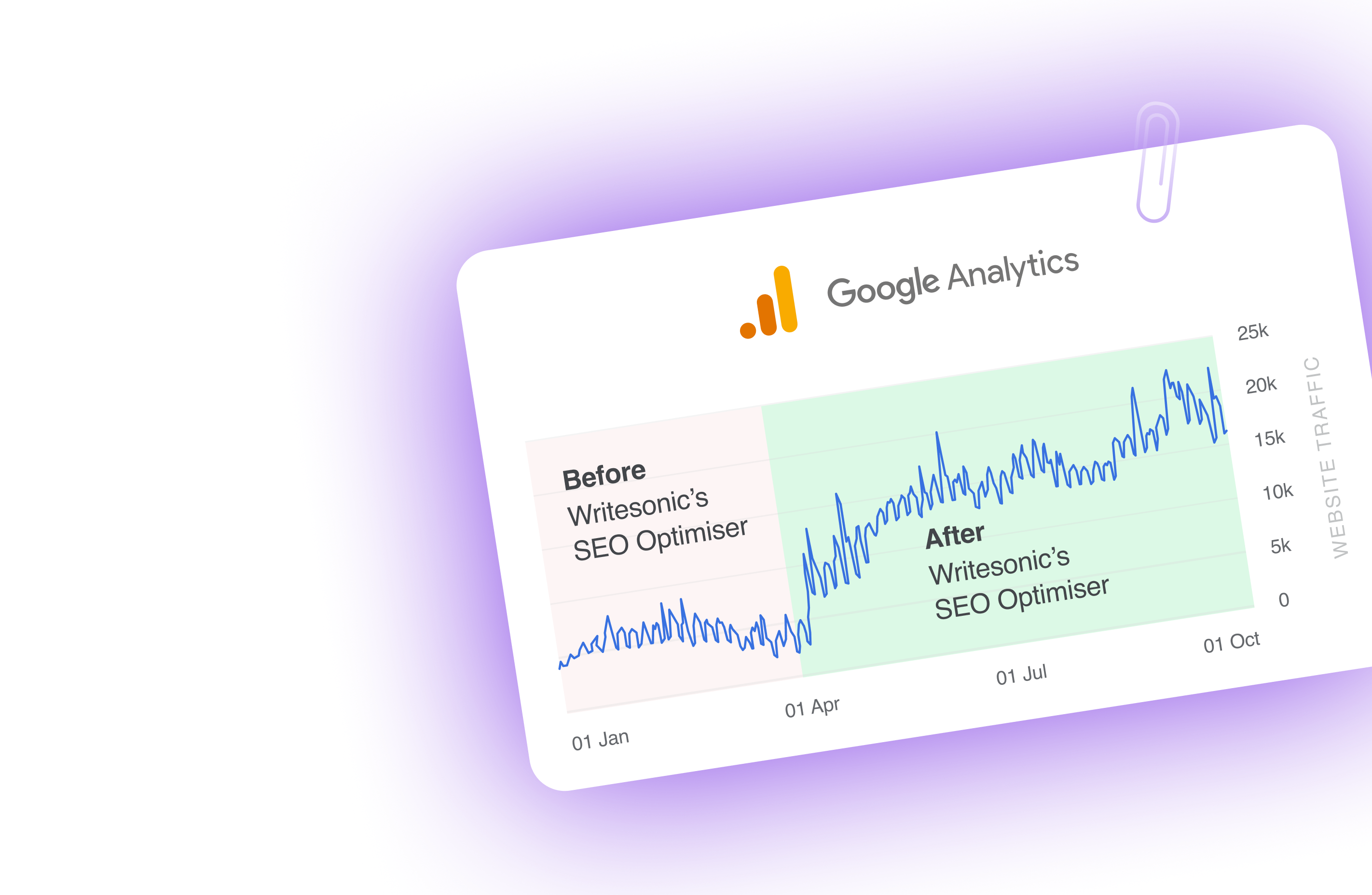Ever laid awake at night, thinking about how to scale customer service without scaling headaches? If you’ve got a booming business, you know the drill—more customers equals more queries, and let’s not even get into managing those late-night customer service shifts. It’s almost like you need to clone your best customer service rep.
Chatbots are like digital doppelgängers for your business that never sleeps. We are not talking about any chatbot, but AI chatbots, the next-gen customer service agents. 🤖
56% of businesses consider AI chatbots to be the driving disruption in the industry.
The numbers say it all 🤷♀️
As a business owner looking to level up your customer service with chatbots, this blog is your one-stop shop. We’re diving into everything from why AI chatbots are your next best move to a step-by-step guide on how to create your own custom chatbot from scratch with no code.
Ready to make customer service your competitive edge? Scroll down! You won’t want to miss this!
What is an AI chatbot?
You’ve probably had a run-in with a chatbot at some point, but not all chatbots are created equal. Ever wondered what makes an AI chatbot the crème de la crème of the conversational bot world?
Check out more about Traditional chatbots and AI chatbots.
A chatbot is a software application designed to mimic human conversation. You type in a query, and boom, it spits out a pre-loaded answer.
But AI chatbots are a whole different ballgame!
💡
An AI chatbot uses Natural Language Processing (NLP) to understand not just the words but also the sentiment and intent behind them. This allows you to create chatbots that provide more accurate and personalized user responses.
More and more businesses are building chatbots using artificial intelligence to add to their everyday business workflows, like customer service, website engagement, lead generation, conversion, and more.
The increasing adoption makes it clear: AI chatbots are not just a trend; they are becoming an integral part of modern business strategies.
How to make an AI chatbot: A step-by-step guide
Building an AI chatbot can seem daunting and only possible for techies. But it is actually more approachable than you think, even for business owners with limited tech skills. Here is a small overview before you go through the detailed steps.
Overview: How to make a chatbot?
- Sign up for Botsonic.
- Upload your knowledge base, which can be in the form of PDF, DOC, or DOCX files, or you can add FAQs and site maps.
- Customize your chatbot according to your business needs.
- Set up starter questions to guide the conversation.
- Collect user data to train the AI chatbot on your specific requirements.
- Integrate Botsonic into your website.
- Track the usage and performance of your chatbot through chat data analysis.
Now, here is a detailed step-by-step guide for creating a simple chatbot with AI.
Step 1: Define the purpose of the AI-based chatbot
The first and essential step in building your AI chatbot is to define its purpose clearly. This is important because the functionality and programming will depend on what you want the chatbot to achieve.
Your AI chatbot’s purpose can vary widely depending on your business needs. It could be for handling customer service queries, generating leads, or guiding users through a complex application process.
Here are a couple of examples for your understanding.
Example 1: Customer Service Bot
If you’re running an eCommerce website, your chatbot could be a 24/7 AI customer service rep, answering FAQs, tracking orders, and handling returns.
This way, you’re not just offering a service; you’re enhancing the customer experience, making it more convenient and accessible for anyone shopping on your site.
💡
Pro Tip: To define this, jot down the most common customer queries your team receives. Look for patterns. These are the queries your bot should be equipped to answer.
Example 2: Lead Generation Bot
For a B2B company offering SaaS products, the chatbot could serve as a lead magnet, engaging visitors with questions to qualify them as potential customers. For instance, asking about their company size, and their needs and providing tailored product recommendations based on feedback and on their answers.
💡
Pro Tip: Start by listing down the qualifications for an ideal customer. Program your bot to ask questions that align with these qualifications.
By the end of this step, you should have a rough document or flowchart that outlines what the chatbot will do and how it fits into your overall business strategy.
Step 2: Choose a Communication Channel
Now that you’ve defined your AI chatbot’s purpose, you are eager to bring it to life. Hold on just a second! The next big decision is figuring out where your AI chatbot will go live.
Analyze and find out where your audience hangs out and how they prefer to communicate. Let’s break it down with examples.
Example 1: Website Chatbots
Your website is often the first point of interaction between your business and potential customers. Adding a chatbot here can drastically improve customer engagement.
💡
Pro Tip: Use no-code AI chatbot builders like Botsonic that can easily integrate with your website. These usually come with plug-and-play functionalities.
Example 2: Social Media Messengers
Platforms like Facebook Messenger, Instagram, and WhatsApp are where people spend a lot of their time. If your audience is active there, meet them where they are!
💡
Pro Tip: You can choose a platform that integrates seamlessly with social media messengers. Check for API support and look at user reviews to make an informed decision.
Example 3: Slack, Teams, and Workplace Chatbots
If your bot’s primary function is internal—like helping your team with HR questions or streamlining project management, then deploy it on team communication platforms like Slack or Microsoft Teams.
💡
Pro Tip: Check for native integrations with these communication platforms and think about how the chatbot will fit into the daily workflows of your team.
You can also add these live chat apps on Shopify.
Choosing the right communication channel is more about where your own chatbot can be effective in achieving its purpose. So, give this step the attention it deserves, and you’ll be setting yourself up for success in the long run.
Step 3: Choose an AI Chatbot Platform
After you have got your purpose locked in and your communication channel sorted. The next on this AI chatbot journey is choosing the right chatbot platform, of course! This is where your chatbot will come to life, learn from interactions, and, dare we say, make you proud. 😉
Now, there are a ton of chatbot platforms already out there, but we’re going to zero in on Writesonic’s no-code AI chatbot platform – Botsonic, which has been stealing the limelight for all the right reasons.
Why Botsonic?
It makes the chatbot building process easy for anyone in your team as it is a no-code AI chatbot builder with GPT-4 powers. Moreover, it is user-friendly and packed with features, as listed below.
- No-Code Magic: You don’t need to be a tech whiz to navigate this Chatbase alternative. The platform offers a drag-and-drop interface that makes it straightforward to design complex workflows.
- AI-Powered: We’re talking about Natural Language Processing (NLP), predictive analytics, and real-time learning to create a chatbot. The AI behind Botsonic is robust and keeps evolving.
- Multi-Channel Support: Remember Step 2, where you chose your channel? Botsonic’s got you covered on multiple fronts—be it your website, email, or social media platforms. All you need to do is embed a piece of code.
- Built-In Analytics: Data-driven decisions are the backbone of any successful venture. Botsonic offers detailed analytics to help you track performance, engagement, and ROI.
- Cost-Effectiveness: Being budget-friendly while offering a range of features makes Botsonic an ideal choice for businesses of all sizes.
You can build your first AI chatbot for free. If you wish to scale to multiple chatbots and more messages, then you can explore Botsonic pricing plans starting at $49 per month.
Step 4: Create the AI Chatbot
- Login to app.writesonic.com with your user’s credentials, or if you are trying it for the first time, you must sign up.
- As the Writesonic app library dashboard opens, click on Botsonic from the left pane.
- Now, the Botsonic dashboard will open. Here, click on the Create a Support Bot button.
- As the New Bot window pops, Name your bot on the ‘Enter bot name’ box and click on the Create Bot button.
N.B: For the purpose of this blog, we are creating a Botsonic chatbot. The chatbot can answer all the customer queries related to Botsonic use cases and pricing.
Step 5: Train your AI Chatbot
You’ll be taken to the chatbot training dashboard as soon as you name your bot. Here, you can add sources with information about your business, and the Chatbot will be trained using machine learning algorithms based on the details available. There are different ways to train your chatbot.
- Files: Click on the ‘+’ button on the ‘Click to upload a file window.’ The Botsonic AI Chatbot builder lets you add files within the size of 100MB. You can upload your file as a PDF document, DOC, DOCX, or TXT file.
- Spreadsheets: Click on the Spreadsheets button; there, you can upload Spreadsheets to Botsonic as CSV or Excel files. However, make sure the file size does not exceed 5MB.
- Links: You can train your chatbot with your website data as well. Click on Links from the top navigation bar. In the ‘Enter a website URL‘ box add the link to your webpage and hit the ‘+’ button on the right.
- Sitemaps: Click on the Sitemaps button and you can directly upload it as a .csv file or enter the website URL and hit the Get Sitemap button to upload it.
- FAQs: Have a list of questions that your audience frequently asks about your product or services? You can upload them in bulk. Click on the ‘+’ button under the ‘Add FAQ in bulk‘ box.
- Integrations: The bot builder lets you integrate and upload your Notion docs too. Click on the Connect button under the ‘Connect an integration‘ box.
Each time you follow any of the above methods to train your chatbot, click on the ‘Upload and Train’ button.
Step 6: Customize Your AI Chatbot
You can now customize the AI Chatbot according to your brand identity from the appearance settings tab. You change the brand logo, brand color, messaging, tone, and more.
Moving to the next tab – Bot settings. Here, you can decide the length of the chat history and responses the AI chatbot gives based on your customers’ preferences. You can choose a language that works for you – Botsonic supports 25+ languages.
Add a customer support email for the users to use if they want to have a human conversation. Additionally, you can also build a rule-based chatbot by adding chatbot guidelines about how to respond, the writing tone, and more.
Next up is ‘Starter Questions.’ Sometimes, visitors can be confused about what they want from a website. To break the ice, you can add a couple of starter questions like,
- What are the best milk-based bases you have?
- Do you have a sale running?
You can either add answers to these questions or let the AI chatbot autogenerate a response from the database.
You can collect details of your visitors and customers to analyze user behavior, track them as leads, and so on with the user responses on the ‘User form.’ You can edit these fields and add the fields you want to collect information on.
Step 7: Integrate the AI Chatbot
You can integrate your Botsonic AI chatbot with WhatsApp, Slack, and Messenger. Not only that, you can also connect it with your existing customer relationship management tools such as Zendesk or Freshdesk for that matter.
- Click on the Connect button at the top nav bar to open the integration page.
- Then click on the associated tool’s card to start integrating that particular tool.
Other than that, you can embed the bot directly into your website by copying the embed script and pasting it on your website’s backend. Also, you can connect the chatbot through an API.
Voila! You have successfully created a Chatbot with AI 👏
Step 8: Test the AI Chatbot
Now, it is time to test the AI Chatbot by asking questions and checking if it can give responses based on the user input correctly.
At the same time, you can also notice that the ChatGPT-powered Chatbot cannot answer questions it is not trained on. It is best for you as a brand – you do not want the user to chat about something else on your website.
Step 9: Monitor the AI Chatbot Analytics
Monitoring analytics is like your chatbot’s report card. It tells you what’s working and what needs to go back to the drawing board. If you ignore analytics, you’re basically flying blind, hoping your chat bot is doing its job.
You can get the complete data about all the chats from Botsonic’s ‘inbox’ and ‘analytics.’
You can export this user interaction data as a CSV file and run further analyses like user behavior to predict trends.
Why create an AI chatbot?
Every business is excited and desperate to add AI chatbots to their operations. But do you really need one for your business?
AI chatbots might be an uprising trend, but it is also about optimizing your operations, boosting customer satisfaction, and, ultimately, increasing your ROI.
Here are a few strong reasons to create an AI chatbot for your business.
Real-Time Customer Support
We live in a world where instant gratification has become the new normal. The days of waiting in long queues are long gone.
62% of customers would rather use an AI chatbot for customer support than wait for a human customer service agent.
An AI chatbot is always available and capable of handling numerous customer queries simultaneously.
This 24/7 availability translates to quicker resolutions, immediate answers, and no frustrating hold times. It’s customer service on steroids, strengthening trust and fostering brand loyalty.
Personalization at Scale
Remember the days when you could walk into a local shop, and the shopkeeper would know your name and preferences? AI chatbots can offer a similar personalization experience to your customers.
They can analyze data from customer behavior and past interactions to offer highly personalized suggestions or solutions. You can also retarget customers with abandoned carts to improve revenue. You provide a unique experience for each customer and the individual attention that was once only possible in small mom-and-pop stores.
Cost Savings
The financial aspect can’t be ignored, especially in today’s hyper-competitive marketplace.
According to IBM, chatbots can answer up to 80% of routine questions, freeing your human staff to deal with more complex customer needs.
This efficiency can lead to a substantial cut in operational costs related to customer service. That’s not just pocket change; it’s a strategic cost-saving initiative that could be a game-changer for many businesses.
Efficient Data Gathering
The value of data in modern business is undeniable. AI chatbots solve problems more than just customer queries. They collect valuable data during every interaction. This data can be leveraged for various applications—product development, chatbots for marketing campaigns, or even operational tweaks.
AI chatbots help you to have a data-driven approach to decision-making, which is more effective than going by gut feeling.
Enhancing User Experience
We all know how a smooth experience can make or break a customer’s relationship with a brand. Chatbots contribute to this by providing real-time assistance. They can guide users through the steps of complicated processes, instantly update them on queries like order status or tracking, and even cross-sell or up-sell products based on customer behavior and preferences.
Accessibility
Chatbots can be integrated across multiple platforms and services, meaning your customers don’t have to go out of their way to seek support or information.
Whether it’s through your website, a third-party messenger app, or even via social media, AI chatbots can be wherever your customers are, increasing accessibility and making life easier for everyone involved.
Here are the 10 best AI chatbots for 2023 that you can explore.
Dos and Don’ts of Building an AI Chatbot
We know that you are not just looking to build any chatbot—you’re aiming for a chatbot that fits your business. Something that can multitask like a pro, offer stellar customer service, and engage website visitors.
Here are the Dos and Don’ts that we think you should consider to build a masterpiece AI chatbot.
Dos
- Add a Human Touch: No one wants to chat with a machine that sounds like it just walked off a factory line. Create a chatbot that sounds personable and approachable so users feel like they’re talking to a buddy, not a block of code.
- Route Complex Conversations to Human Agents: Let’s face it, your chatbot won’t have all the answers. And that’s okay! When a query stumps your bot, make sure you have a seamless transition in place to route the user to a human agent who can help.
- Mimic Real Human Conversations: Conversations are more than just question and answer sessions. Create a chatbot that can handle chit-chat, pleasantries, and even throw in a joke or two. The idea is to emulate real human interaction so users forget they’re talking to a machine.
Don’ts
- Design Dead-End Conversations: The last thing a user wants is to hit a conversational dead-end. You know, when the chatbot says, “I don’t know,” and leaves it at that. Always provide alternatives or suggestions for users to keep the conversation moving.
- Overcomplicate Chatbot Flows: Simplicity is key. Your mom should be able to use your chatbot without pulling her hair out. Keep the conversations and navigational flows simple, intuitive, and easy to follow. Don’t drown users in a sea of options.
- Allow for (Too) Open-Intent Conversations: While it’s great that your chatbot can chat about anything it is trained on, this can be a double-edged sword. Too much freedom can lead to off-topic and unproductive conversations that do not match the user intent. It’s good to be open but have some boundaries in place.
The Chatbot Blueprint: Final Words
So, you’ve made it through the ins and outs of AI chatbots. We’ve covered everything from why they’re essential for customer support and scaling your business to how to actually build one step-by-step.
It’s a lot, but it’s all manageable. Especially when you have the right tools. Speaking of which, if you want a hassle-free way to build an AI chatbot, Botsonic is your go-to, a no-code AI chatbot builder. Time to take action— Try Botsonic and give your business the upgrade it’s been waiting for.
FAQs
1. Is it easy to build a chatbot?
You bet it’s easy—especially if you use a platform like Botsonic. Botsonic offers a no-code solution, so you can create a functional chatbot without wrestling with complex programming. With an intuitive interface, white labeling, and customization options, it’s designed for simplicity and efficiency.
2. How can I make my first chatbot?
To make your first chatbot, you’ll need first to define its purpose, choose a communication channel, and then pick a platform. If you’re looking for ease and convenience, Botsonic has got your back. Just follow a step-by-step guide within the platform, and voila, your first chatbot will be up and running!
3. How long does it take to build a chatbot?
The time can vary depending on the complexity and functionality you need. With traditional coding, it can take weeks or even months. However, using a no-code platform like Botsonic can significantly cut down the time to a few days or even hours!
4. How do I build a chatbot for my website?
Making a chatbot for your website isn’t as daunting as it seems. Define the purpose, design the conversation flow, and integrate it into your website. Chatbot platforms like Botsonic make this process easy by providing options to directly embed your own chatbot back into your website with no hassle involved.
5. How much does it cost to make a chatbot with AI?
Costs can range from a few hundred dollars for basic conversational commerce bots to thousands for more complex versions. The beauty of using Botsonic is that you can start building your AI chatbot for free and then choose a pricing plan that suits your business needs, offering both affordability and functionality.

